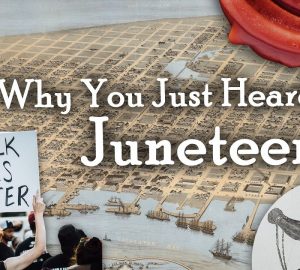
We have received several comments on our recent video about the CSS Neuse questioning our statement that the American ironclads had a major impact on naval technology. They point out, and rightly so, that European nations already had ironclads. We have a video addressing them that will be released soon, but we just wanted to answer some of these questions.

Several “floating batteries” were built in the Crimean War, primarily designed to fight forts. In 1859 the French built an “ironclad frigate” called La Gloire. It was 250 feet long, carried 38 cannon, was covered in over 4 inches of iron and could travel 12 knots. To keep up with France, Britain built the HMS Warrior in 1860, the largest ironclad at that point in time. By 1862 Britain and France had 16 ironclads completed or under construction, and Austria, Italy, Russia and Spain were building them as well. It was generally recognized that iron-clad warships would be the future of ironclad warfare.
Although they were not the first of their kind, the Civil War ironclads were very important. They were used for the first time in ship-to-ship combat. It was shown exactly how invulnerable their plates were to shot, and how helpless traditional wooden ships were before them. It caused England and other naval powers to question their supremacy on the seas. America emerged from the war as an important player in maritime affairs.

In the video, we talk about about a monitor that crossed the Atlantic and gave Britain a scare. This ship was the USS Miantonomoh. Launched in 1863 from Brooklyn, she crossed the Atlantic in 11 days in June, 1866. She was a symbol of America, for she carried Gustavus Fox, Assistant Secretary of the Navy, on a mission to the Czar to express sympathy for the recent attempt on his life. The English papers were very impressed when she stopped there. The Times said, “The wolf is in our fold; the whole flock at its mercy.”1 Before this point the British had seen the American ironclads as coastal vessels that did not pose a real threat to them. After all, didn’t the Monitor itself sink in a storm, even while being towed? The voyage of the Miantonomoh, although it was towed across the ocean, dealt a blow to that view. As the Times said, “The Monitors have won. It is plain that they do not longer need advocacy.”2 Another paper wrote, “Now the Miantonomah [sic] has crossed the Atlantic, we shall have to re-construct our Navy after her pattern, to be a match for the Americans.”3 The importance of the American monitors was seen even in the highest reaches of politics, with Palmerston writing, “we must keep Pace with France, America and Russia,” as “the Fleets numerically smaller of the lesser Maritime Powers will tell more effectively than in the olden Time because of their modern Construction.”4

So although the British had ironclads before the Americans, they still took a hard look at the new iron American navy, and the comparisons they drew were not always favorable for them. Historian Kenneth Bourne has written this:
The British were certainly worried for a time about pacing and overtaking the Americans in the production of armored warships and about the relative merits of their armor and armor-piercing guns. In the spring and summer of 1862 Russell, among others, was warning that the United States might very well get the lead in numbers of ironclads within as little as six months… Thus the 1860s found the government comparing their ironclad navy as much with the American as with the French. Their investigations certainly exposed considerable discrepancies in the Americans’ favour. At the very end of 1864 some seventy-one of the Union navy’s 671 vessels building and afloat were ironclads, against a mere thirty in the British steam navy of 417.5
1. Dictionary of American Naval Fighting Ships, by James L. Mooney (Government Printing Office) vol. 4, p. 348.
2. Clad in Iron: The American Civil War and the Challenge of British Naval Power by Howard J. Fuller (Westport, CT: Greenwood Publishing Group, 2008) p. 282
3. Ibid, p. 281
4. Ibid, p. 282-283
5. Britain and the Balance of Power in North America, 1815-1908 by Kenneth Bourne (Berkeley, CA: University of California Press, 1967) p. 275





True, in some aspects the monitors were more modern than the iron frigates, but the Warrior was almost certainly faster, more seaworthy, and way more intimidating than a monitor.
Yours, Caleb.